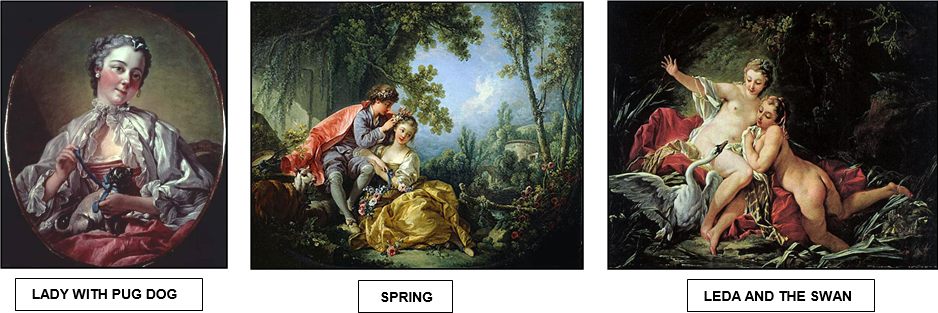


xxxxxThe French rococo artist François Boucher was the greatest decorative painter of his day. Influenced by his teacher, François Lemoyne, Rubens, and his contemporaries Watteau and Tiepolo, his pastoral and mythological scenes -
FRANÇOIS BOUCHER 1703 -
Acknowledgements
Boucher: by the Swedish portrait painter Gustaf Lundberg (1695-
G2-
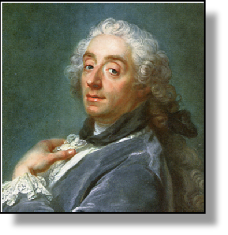 xxxxxThe French engraver, painter and designer François Boucher was the leading exponent of the rococo style during the reign of Louis XV. Owing much to his teacher, François Lemoyne (1688-
xxxxxThe French engraver, painter and designer François Boucher was the leading exponent of the rococo style during the reign of Louis XV. Owing much to his teacher, François Lemoyne (1688-
xxxxxHe was born in Paris, and lived most of his life in that city. At the age of 17 he became a pupil of François Lemoyne, an artist known for his lavish, exuberant style, but he left after a few months and, for a time, earned his living by making engravings of 125 of Watteau's drawings, and producing illustrations for an edition of Molière's works. In 1723, however, he won the Prix de Rome and, after a delay of four years -
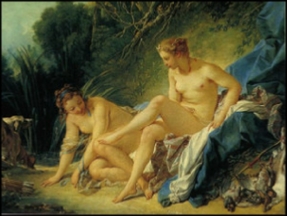 xxxxxIt was from this time that his dazzling career really took off. Over the next thirty years he produced hundreds of paintings. Many were pastoral and mythological scenes, facile and whimsical in style and mood, and often replete with feminine charms. Some, like the delightful Diana leaving her Bath (detail illustrated), Leda and the Swan, The Triumph of Venus, and Cupid a Captive, were sensuous by design and bordering on the erotic. And the same can be said of his beautiful nude studies, particularly The Odalisque, painted in the early 1740s, and his masterpiece Mademoiselle O'Murphy -
xxxxxIt was from this time that his dazzling career really took off. Over the next thirty years he produced hundreds of paintings. Many were pastoral and mythological scenes, facile and whimsical in style and mood, and often replete with feminine charms. Some, like the delightful Diana leaving her Bath (detail illustrated), Leda and the Swan, The Triumph of Venus, and Cupid a Captive, were sensuous by design and bordering on the erotic. And the same can be said of his beautiful nude studies, particularly The Odalisque, painted in the early 1740s, and his masterpiece Mademoiselle O'Murphy -
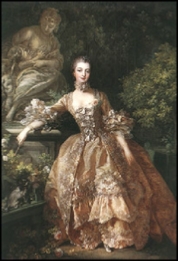 xxxxxBut it was not all naked flesh. His paintings also included some idealistic interpretations of country life, a number of domestic scenes (like Le Déjeuner of 1739), a series of pastels on the Four Seasons, and works with a religious content, such as The Adoration of the Shepherds. And he was also a fine figure artist. His portraits included the Woman with Muff, a charming study of his wife and principal model Madame Boucher, and a number of stunning, dignified portraits of his generous patron Madame de Pompadour -
xxxxxBut it was not all naked flesh. His paintings also included some idealistic interpretations of country life, a number of domestic scenes (like Le Déjeuner of 1739), a series of pastels on the Four Seasons, and works with a religious content, such as The Adoration of the Shepherds. And he was also a fine figure artist. His portraits included the Woman with Muff, a charming study of his wife and principal model Madame Boucher, and a number of stunning, dignified portraits of his generous patron Madame de Pompadour -
xxxxxBut his paintings were only part of his contribution to rococo art at this time. Early in his career he had worked in the theatre on stage and costume design. In 1735 he received his first royal commission to work on the interior decoration at the Palace of Versailles, painting panels in t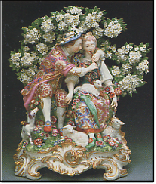 he public rooms and the Queen's boudoir. The contacts he made there, plus his close association with Madame de Pompadour, opened up a new field of activity. He was soon designing art work for tapestries produced at the royal factories of Beauvais and Gobelins -
he public rooms and the Queen's boudoir. The contacts he made there, plus his close association with Madame de Pompadour, opened up a new field of activity. He was soon designing art work for tapestries produced at the royal factories of Beauvais and Gobelins -
xxxxxBoucher probably met Giovanni Battista Tiepolo (1696-
xxxxxBoucher's counterpart in Italy at this time was Giovanni Battista Tiepolo (1696-
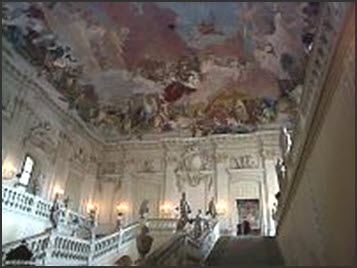
xxxxxBut vast though they were in size, these frescoes or oil paintings were in no way oppressive, due to his light, airy touch and his use of soft, luminous colours -
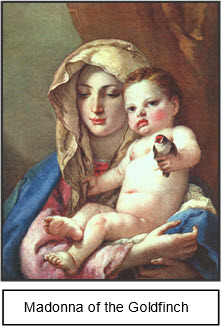 xxxxxIn his early years, some of his finest works were painted in the Lombard towns of Bergamo and Milan, and for villas in and around Venice. In 1750, however, such was his fame, that he was invited to the German town of Wurzburg. It was there, assisted by his two sons, Giovanni Domenico and Lorenzo, that he decorated the Bishop's palace with scenes of extraordinary beauty from classical mythology and German history – including episodes from the life of Frederick Barbarossa – and a colossal masterpiece of illusionism over the stairway depicting the four known continents (illustrated above). In 1762 he and his sons were invited to Spain by Charles III, and he worked there until his death eight years later. His major achievement here was his decoration of the recently completed royal palace. His work included The Apotheosis of Spain, a glorification of Spain's achievements, and, in the throne room, a magnificent ceiling fresco depicting Spain and Her Provinces.
xxxxxIn his early years, some of his finest works were painted in the Lombard towns of Bergamo and Milan, and for villas in and around Venice. In 1750, however, such was his fame, that he was invited to the German town of Wurzburg. It was there, assisted by his two sons, Giovanni Domenico and Lorenzo, that he decorated the Bishop's palace with scenes of extraordinary beauty from classical mythology and German history – including episodes from the life of Frederick Barbarossa – and a colossal masterpiece of illusionism over the stairway depicting the four known continents (illustrated above). In 1762 he and his sons were invited to Spain by Charles III, and he worked there until his death eight years later. His major achievement here was his decoration of the recently completed royal palace. His work included The Apotheosis of Spain, a glorification of Spain's achievements, and, in the throne room, a magnificent ceiling fresco depicting Spain and Her Provinces.
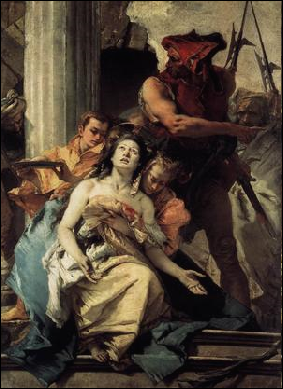 xxxxxAmongst his finest works are The Banquet of Cleopatra, painted for King Augustus III of Saxony, his historical frescos in the Villa Conarini (between Venice and Padua), his Triumph of Faith in the Church of the Pietà in Venice, and his scenes from Homer's Iliad in the Villa Valmarana at Vicenza -
xxxxxAmongst his finest works are The Banquet of Cleopatra, painted for King Augustus III of Saxony, his historical frescos in the Villa Conarini (between Venice and Padua), his Triumph of Faith in the Church of the Pietà in Venice, and his scenes from Homer's Iliad in the Villa Valmarana at Vicenza -
xxxxxTiepolo, who was married to Cecilia Guardi, the sister of the Italian view painter Francesco Guardi, was appointed director of the Venetian Academy in 1756. Aptly described by one of his contemporaries as "all spirit and fire", his output was phenomenal and, in contrast to his huge rococo frescoes, included a few portraits and a vast number of small sketches and etchings, all superbly executed. Many of his drawings can be seen in the Victoria and Albert Museum in London. His paintings were to have a marked influence on the French artist Jean Honoré Fragonard, and the Spanish painter Francisco de Goya.
xxxxxIllustrated here are his painting The Crucifixion (now in the Saint Louis Art Museum, Missouri), and two frescoes: The Judgement of Solomon and The Sacrifice of Isaac (both to be seen in the Patriarchal Palace, Udine, Italy).
xxxxxIncidentally, with the passing of the years, Tiepolo's fussy decorative paintings tended to fall out of favour in some quarters. The 19th century English art critic John Ruskin, for example, doubtless spoke for many when he described his work as but a reflection of the "moral decline" which was then under way in the Venice of his day.

xxxxxBoucher may be regarded as the most successful decorative painter of his day, but he was not without his critics. The pioneering art critic Denis Diderot, for example, who saw the purpose of art as inculcating moral virtue, launched a bitter attack upon him in 1765, declaring that his work was responsible for "the degradation of taste" and the "depravation of morals". Furthermore in France, the fussy rococo style, with its superficial treatment of serious subjects, and its depiction of a world divorced from reality, was soon to give way to neo-
Including:
Giovanni Battistaxxxxx Tiepolo




